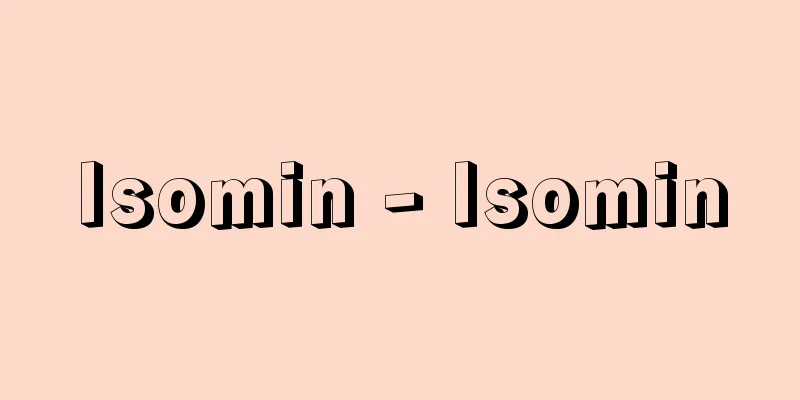Isomin - Isomin

|
...It was developed by Chemy Grünenthal (West Germany) as a non-barbiturate hypnotic, and was marketed under the name Contergan in 1956. This drug is widely used around the world, and was also sold in Japan under the brand name Isomine. However, it soon became suspected that it was related to the increase in phocomelia, a condition in which babies are deformed with missing limbs, and in 1961 W. Lenz and others accused it of being the causative agent, and its sale was banned. *Some of the terminology explanations that mention "Isomin" are listed below. Source | Heibonsha World Encyclopedia 2nd Edition | Information |
|
…非バルビツレート系催眠薬として,ヘミー・グリュネンタール社(西ドイツ)で開発され,1956年にコンテルガンの名で市販された。この薬は世界で広く用いられ,日本でもイソミンの商品名で発売された。しかし,間もなく四肢に欠損のある奇形児アザラシ肢症phocomeliaの増加と関係があるのではないかとの疑いがもたれ,61年にW.レンツらにより原因物質として告発され,発売は禁止された。… ※「イソミン」について言及している用語解説の一部を掲載しています。 出典|株式会社平凡社世界大百科事典 第2版について | 情報 |
Recommend
Itoda [town] - Itoda
A town in Tagawa County in the north-central part ...
American Wintersweet - American Wintersweet
...The bark is also fragrant, and is said to have...
Kurozaemon Ohga
Year of death: September 21, 1641 (October 25, 164...
Daendels, Herman Willem
Born: October 21, 1762. Hattem [Died] May 2, 1818....
Bengalese Finch (Bengali finch) - Bengalese Finch
A bird of the maple family. A sparrow-like pet bir...
Georges Dumézil
French linguist and mythologist. He was also a me...
Correctional institution - Kyoseiin
The former name of a juvenile training school. Est...
virrey
...But the only bond that bound the federation wa...
Aizuya Hachiemon
Year of death: Tempo 7.12.23 (1837.1.29) Year of b...
Jumper - Jumper (English spelling)
(1) A jacket or shirt with a top length that is e...
Oshio Rebellion
A rebellion started by Oshio Heihachiro and others...
Akigiri - Akigiri
A perennial plant of the Lamiaceae family (APG cl...
Granger laws
...Furthermore, even if fares that appear to be i...
Ethyl vanillin
Vanilla essence is used as a flavoring agent. Sour...
Phantasia
…Fantasy is fantastic, supernatural, mysterious, ...









